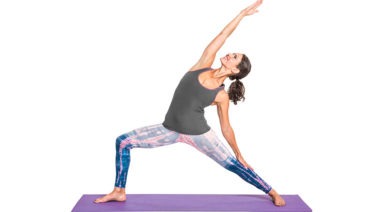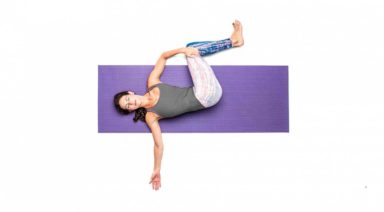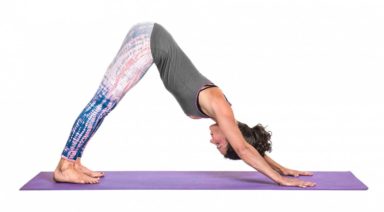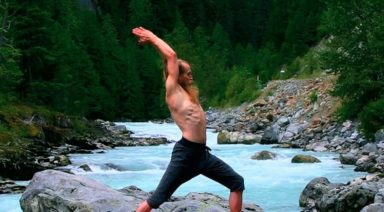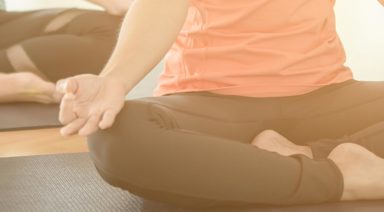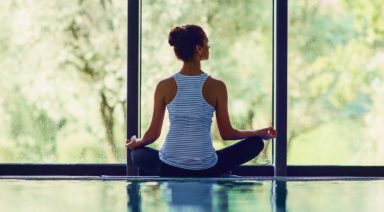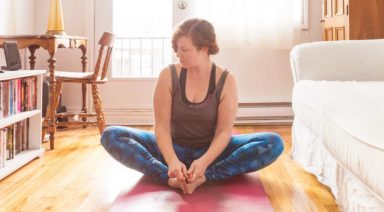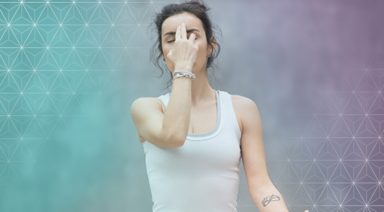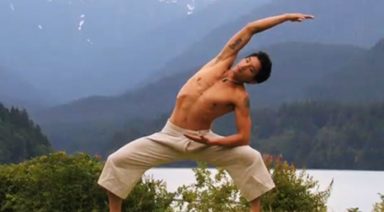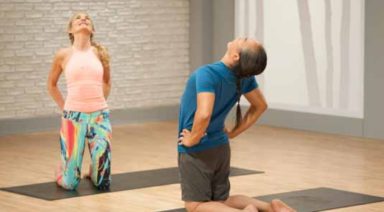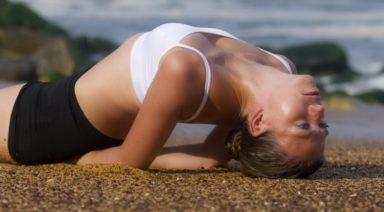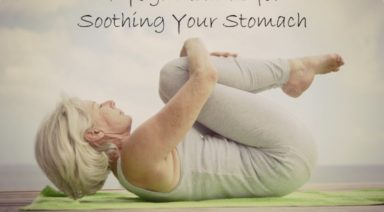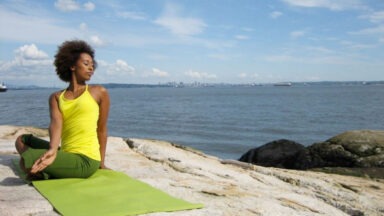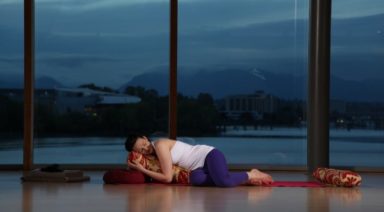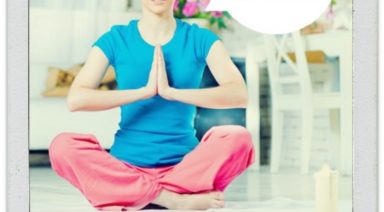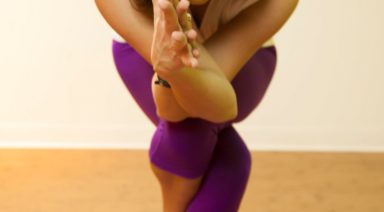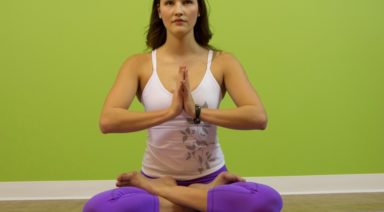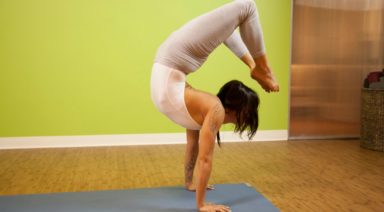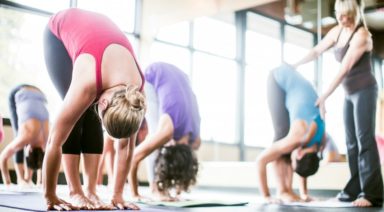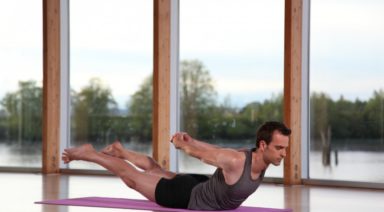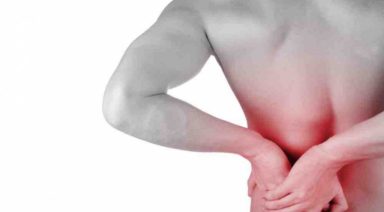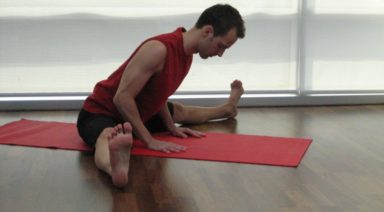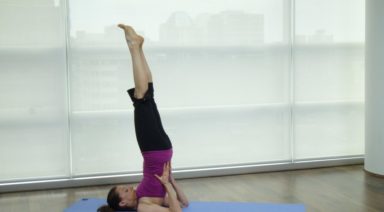Ustrasana: Camel Pose
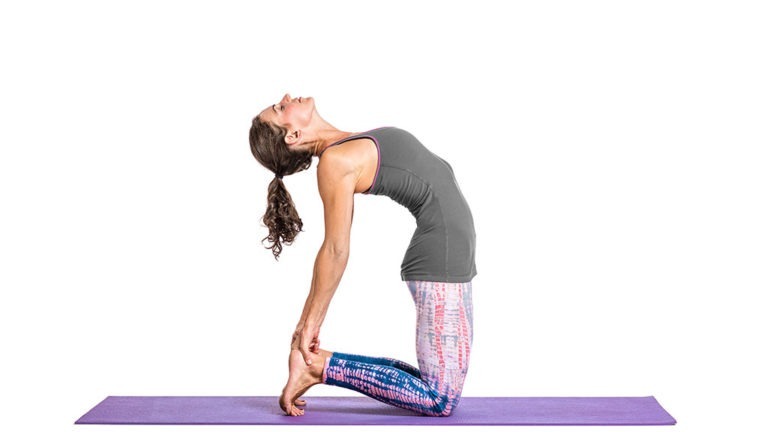
ADJUSTMENTS | BENEFITS | MANTRA | MUDRA | PREP POSES | SANSKRIT | STEPS
Ustrasana (oosh-TRAHS-anna), offers a long list of benefits for both the physical and subtle bodies. Thanks to its many different variations and modifications, there are plenty of ways for individuals of all levels to appreciate the chest-opening and chakra-opening effects of camel pose.
Philosophy + Origin
Camel pose is named because the shape resembles the hump on a camel’s back, however there are other ways to consider the name when approaching the posture. Camels are known for their slow, steady, almost methodical way of moving. Rather than trying to race into the posture, moving slowly and methodically will help you find its benefits safely. Camels use their humps as food reserves, like well-packed bags ready to be used when needed. This type of physical preparation, a part of the camel’s natural adaptation for survival, is essential for this pose as well. Take your time to gather and practice the skills and knowledge necessary to take a back-bending journey to ensure that you come in and out of the posture with ease and poise.

ADJUSTMENTS/MODIFICATIONS:
- Keep your toes tucked rather than placing the tops of your feet flat on the floor.
- Pace a folded blanket under your knees for extra padding.
- Keep your hands on your lower back and pelvis rather than reaching back for your heels to work on proper alignment as you explore camel pose.
- Press your thighs and hips against a wall to keep the lower body in proper alignment.
- Place a block between your thighs and squeeze thighs into the block and behind you. This is internal rotation of the inner thighs.
STEP-BY-STEP:
- Begin kneeling at the top of your mat with knees right under your inner hip points. Keep your shins parallel to each other.
- Place your hands on your lower back/sacrum with your fingers pointing down. Guide your tailbone down. Keep pressing your thighs back as you use an inhale to start lifting your heart up. Find extension through your heart by bringing the shoulder blades down and into your back ribs.
- Begin to lean back without dropping your head. Keep your chin in close to your sternum. With your hands still on your sacrum, find more depth by continuing to draw your shoulders together, focusing on length and extension of the pose rather than depth.
- Once you’ve extended as far as you can, option to reach back with one hand at a time to find your feet. Your hands will rest on your heels if your toes are tucked. Otherwise, they will rest on the soles of your feet.
- Draw your front ribs in to keep your belly soft and your spine long. Use your hands against your feet to lift more through your heart and sternum with each inhale. At this point, you can choose to drop your head back or to keep your head supported with the neck in a more neutral position.
- Hold for up to 60 seconds. To release the pose, return your hands to your pelvis and use an inhalation to come up, pushing the hip points down for support. Lead with your heart, head coming up last. Sit your hips on your heels for a few breaths to feel the residue of the pose.

PREPARATORY POSES:
- Cobra pose | Bhujangasana
- Floor bow | Dhanurasana
- Locust pose | Salabhasana
FOLLOW-UP POSES:
- Staff pose | Dandasana
- Childs pose | Balasana
- Upward facing bow | Urdhva dhanurasana
SANSKRIT:
- Ustra = camel
- Asana = pose
PHYSICAL BENEFITS:
- Stretches the neck, chest, abdomen, thighs, hip flexors, groins, and ankles.
- Strengthens the back, glutes, and triceps.
- Improves overall posture.
ENERGETIC BENEFITS:
- Stimulates energetic centers in the body, primarily the chakras located in the navel, heart, and throat.
MANTRA:
“Yam”
The seed mantra for the heart is “yam.” Reciting this simple yet powerful mantra will encourage your heart to open and balance with your other energy centers.
MUDRA: Hridaya
To practice this heart chakra mudra, bring your index fingers to the base of your thumbs. Press the tips of your middle fingers and ring fingers to the tips of your thumb. The pinky fingers extend straight up. Allow your hands to rest in your lap or on your knees with the palms of your hands facing up.
Legal Disclaimer Before participating in any exercise program or using any fitness products or services that may be described and/or made accessible in or through the Gaia Website and/or the Services, you should consult with a physician or other healthcare provider. Read more about Gaia’s Terms Of Use.
Viparita Virabhadrasana: Reverse Warrior Pose
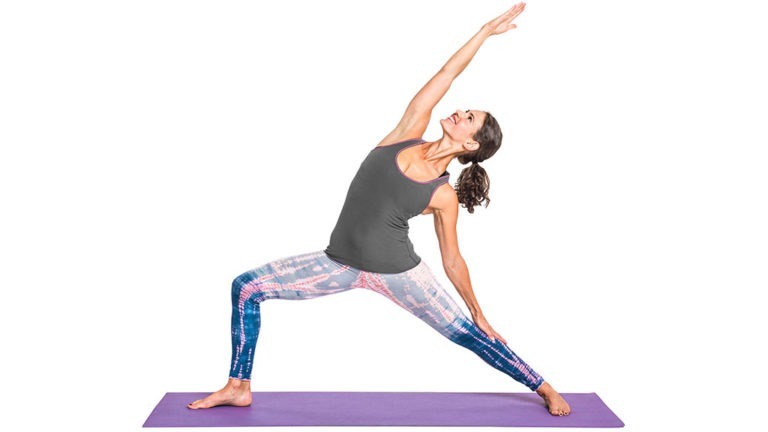
ADJUSTMENTS | BENEFITS | SEQUENCING | SANSKRIT | STEPS
In viparita virabhadrasana (VIP-uh-REE-tuh veer-uh-buh-DRAHS-uh-nuh), experience a member of the “warrior” family with an incredible opening in the side of the torso as well as the stretching the legs. By giving the side of your heart an opportunity to shine (as a side bend rather than a back bend), this posture offers all sorts of positive vibes, including a boost of self-esteem and perseverance.
Philosophy + Origin
The general definition of a warrior is someone who “engages in warfare,” which conjures up images of battlefields, weapons, and violence. The power of reverse warrior is to “turn around” this imagery to think about warriorship in different contexts. The idea of a peaceful warrior, or even a light warrior, is used in yoga to remind students that showing up with love and intention in day-to-day life is just as important, if not more so. When practicing reverse warrior, ask yourself to consider definitions or beliefs in your life from another perspective. There are two sides to each coin, and the better you know both sides, the better prepared you will be to live your life with steadiness, grace, and ease.



